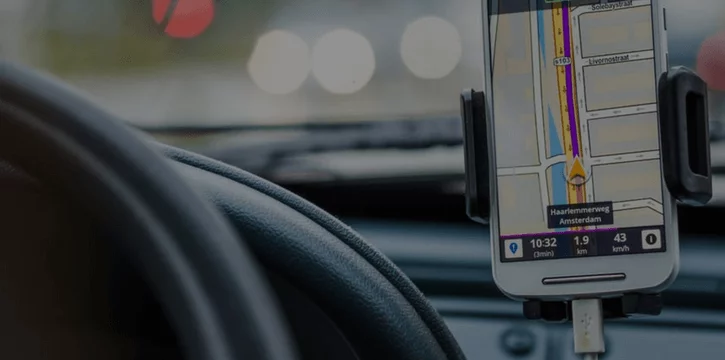Kids today will never know the struggle of taking a road trip without GPS.
The pains of cross-country navigation are nearly extinct. The days of manually mapping a route, getting lost, and having to ask strangers for directions are gone — so long as you have a signal and enough battery life to keep you going.
Similar to the rise of GPS navigation, an increasing number of organizations are using Digital Adoption Platforms (DAP) to install “GPS”-like guidance onto their digital platforms.
A DAP runs on top of any digital system — enterprise software, SaaS platforms or websites. Any time an online user needs guidance, the DAP steps in.
Soon the frustration of using unfamiliar technology will also be forgotten as the next generation of web navigation tools make it effortless to get from point A to point B online.
Say goodbye to user frustration with the ultimate digital navigation tool.
Software and website navigation tools help users successfully achieve any goal on any digital platform — no matter how complex.
Typically, most platforms have this feature built into the design. This can be in the form of a navigation bar at the top of the page or a search bar that allows the user to search for particular information within the platform.
However, while these aids can help in certain scenarios, they do not take into account the user journey. Software and website navigation tools should, ideally, help the user to get from point A to B in the fewest clicks possible.
Traditional forms of digital navigation aids see a rational user and do not account for human error and frustration that may arise.

Currently, most online systems rely on “fold-out map” style navigation for users to know where they are, how they got there and where they should go next.
Online, traditional website navigation tools are usually found as a part of the URL or as a clickable list at the top of the page. But, just like how printing out directions for a road trip may not be as helpful as using a GPS, these navigation tools can often fall short of giving the user an optimal experience.
On enterprise software, the navigation bar or system outline is available for the user to read and manually navigate through the platform on their own. While this is helpful, it’s more like using a map rather than a GPS.
Great UX should include directions for where to go, not just where you have been. To go one step further, navigation should guide you each step of the way to get there.
Digital Adoption Platforms fundamentally change how users interact with technology
Imagine a world where you no longer needed to “learn” technology. You could just pick up any platform known to man and use smart guidance to complete any task.
That’s how a Digital Adoption Platform (DAP) works.
When a user is not sure how to get from A to B, the DAP automatically provides onscreen guidance to ensure they use the best possible route to get there. No more awkwardly tapping on your manager’s shoulder to ask them for help ever again.
In the same way that drivers trust GPS to get them to their destination, users know their DAP will show them where to click or look to next when they need help. It doesn’t matter if they have ever seen the platform they are using before — with step-by-step guidance they will gain instant proficiency.
DAPs don’t just guide users, they also help draw user attention to certain parts of a platform. This offers a more proactive approach to platform support. For example, a DAP might detect a place where users are having issues and offer support before the user is aware that they are stuck.
One of the great things about the WalkMe DAP is that it does not require making any changes to the existing, underlying platform. Instead, WalkMe layers the DAP on top of the system architecture.
As an admin or employer, having the Digital Adoption Platform means you have the power to instantly reach each and every user of your platform with the exact information they need.
It’s the difference between having a map in the trunk or a GPS installed in the dashboard.


